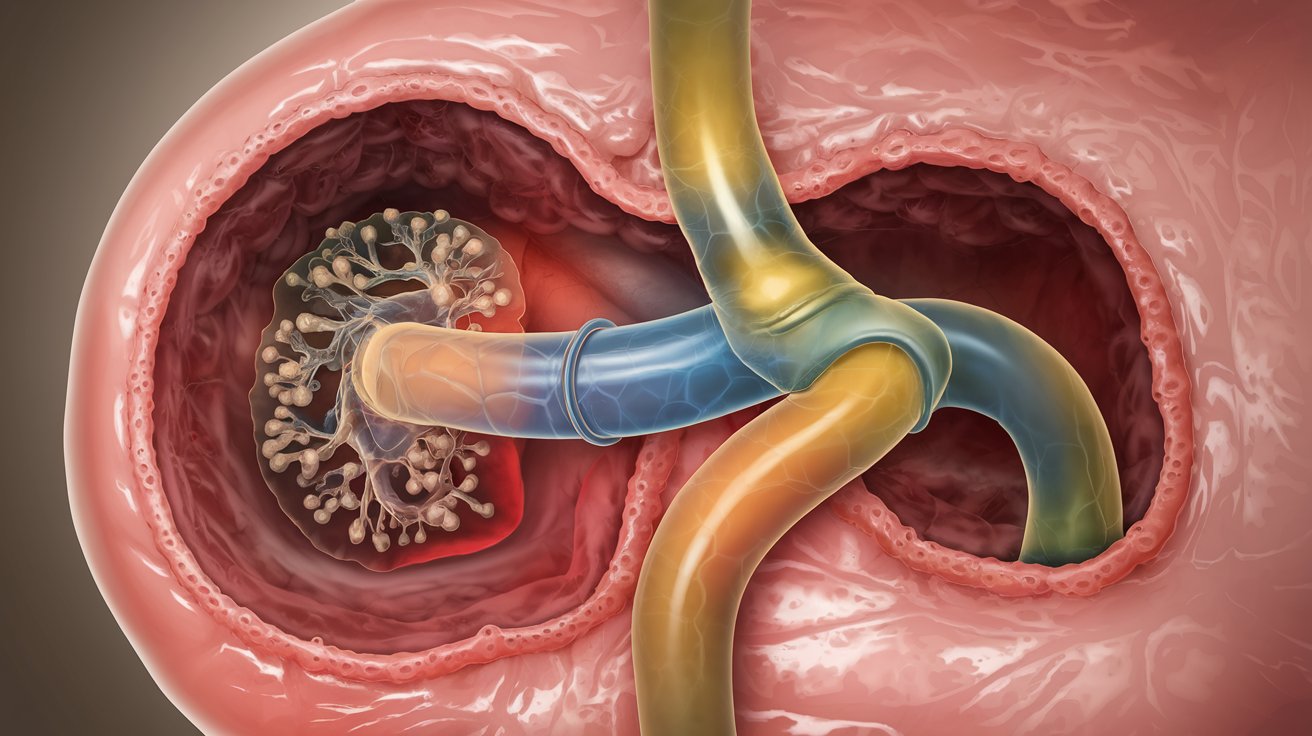
Congenital Bronchobiliary Fistula is a rare condition where an abnormal connection forms between the bronchial tubes and the bile ducts. This unusual link can cause bile to enter the lungs, leading to serious respiratory issues. Symptoms often include coughing up bile, recurrent lung infections, and difficulty breathing. Diagnosing this condition can be tricky due to its rarity and the similarity of its symptoms to other respiratory diseases. Treatment usually involves surgery to close the fistula and prevent further complications. Understanding this condition is crucial for early detection and effective management. Here are 30 facts to help you grasp the essentials of Congenital Bronchobiliary Fistula.
Key Takeaways:
- Congenital Bronchobiliary Fistula is a rare condition where an abnormal connection forms between the bronchial tubes and the biliary system. It can cause coughing, respiratory distress, and jaundice, and is usually present at birth.
- Accurate diagnosis and surgical intervention are crucial for treating Congenital Bronchobiliary Fistula. With proper care, most patients recover well after surgery and can lead normal, active lives. Ongoing medical check-ups are important for long-term health monitoring.
What is Congenital Bronchobiliary Fistula?
Congenital Bronchobiliary Fistula (CBBF) is a rare medical condition where an abnormal connection forms between the bronchial tubes and the biliary system. This condition can lead to various complications and requires careful medical attention.
- CBBF is extremely rare. Only about 100 cases have been reported in medical literature.
- It is present at birth. The condition is congenital, meaning it develops during fetal growth.
- Symptoms can vary. Common symptoms include coughing, respiratory distress, and jaundice.
- Diagnosis is challenging. Often, it requires a combination of imaging studies and clinical evaluation.
- It can mimic other conditions. CBBF symptoms are similar to those of respiratory infections or liver diseases.
Causes and Risk Factors
Understanding the causes and risk factors can help in early detection and management of CBBF.
- Exact cause is unknown. The precise reason why CBBF occurs is still a mystery.
- Genetic factors may play a role. Some researchers believe there could be a genetic predisposition.
- Developmental anomalies. Errors during fetal development can lead to the formation of the fistula.
- No known environmental triggers. Unlike some congenital conditions, environmental factors are not linked to CBBF.
- Family history is not a significant factor. There is no strong evidence suggesting that CBBF runs in families.
Symptoms and Complications
Recognizing the symptoms early can lead to better outcomes for those affected by CBBF.
- Persistent cough. A chronic cough that doesn't respond to typical treatments can be a sign.
- Respiratory infections. Frequent lung infections may occur due to the abnormal connection.
- Jaundice. Yellowing of the skin and eyes can indicate bile leakage into the lungs.
- Difficulty breathing. Respiratory distress is a common symptom in infants with CBBF.
- Failure to thrive. Infants may struggle to gain weight and grow normally.
Diagnosis and Testing
Accurate diagnosis is crucial for effective treatment of CBBF.
- Chest X-rays. These can reveal abnormalities in the lungs.
- CT scans. Detailed imaging helps identify the fistula's location.
- MRI. Magnetic resonance imaging provides a clear picture of the biliary system.
- Bronchoscopy. This procedure allows doctors to view the inside of the airways.
- Hepatobiliary scintigraphy. A specialized scan to assess bile flow and detect leaks.
Treatment Options
Treatment for CBBF often involves surgical intervention to correct the abnormal connection.
- Surgical repair. The primary treatment is surgery to close the fistula.
- Preoperative care. Stabilizing the patient before surgery is essential.
- Postoperative care. Monitoring for complications after surgery is crucial.
- Antibiotics. Used to treat or prevent infections related to the fistula.
- Nutritional support. Ensuring proper nutrition helps in recovery and growth.
Prognosis and Long-term Outcomes
With proper treatment, individuals with CBBF can lead healthy lives, but long-term monitoring is often necessary.
- Good surgical outcomes. Most patients recover well after surgery.
- Possible complications. Some may experience recurrent infections or respiratory issues.
- Regular follow-ups. Ongoing medical check-ups are important to monitor health.
- Quality of life. With treatment, many individuals lead normal, active lives.
- Research is ongoing. Scientists continue to study CBBF to improve understanding and treatment options.
Final Thoughts on Congenital Bronchobiliary Fistula
Understanding congenital bronchobiliary fistula can be a game-changer. This rare condition, where an abnormal connection forms between the bronchial tubes and bile ducts, often presents unique challenges. Early diagnosis is crucial for effective treatment. Symptoms like persistent cough, recurrent respiratory infections, and bile-stained sputum should never be ignored. Advanced imaging techniques, such as CT scans and MRIs, play a vital role in identifying this condition. Surgical intervention remains the primary treatment, aiming to close the fistula and restore normal function. Awareness and knowledge about congenital bronchobiliary fistula can lead to better outcomes for those affected. Always consult healthcare professionals if you suspect any related symptoms. Stay informed, stay proactive, and prioritize health.
Frequently Asked Questions
Was this page helpful?
Our commitment to delivering trustworthy and engaging content is at the heart of what we do. Each fact on our site is contributed by real users like you, bringing a wealth of diverse insights and information. To ensure the highest standards of accuracy and reliability, our dedicated editors meticulously review each submission. This process guarantees that the facts we share are not only fascinating but also credible. Trust in our commitment to quality and authenticity as you explore and learn with us.


